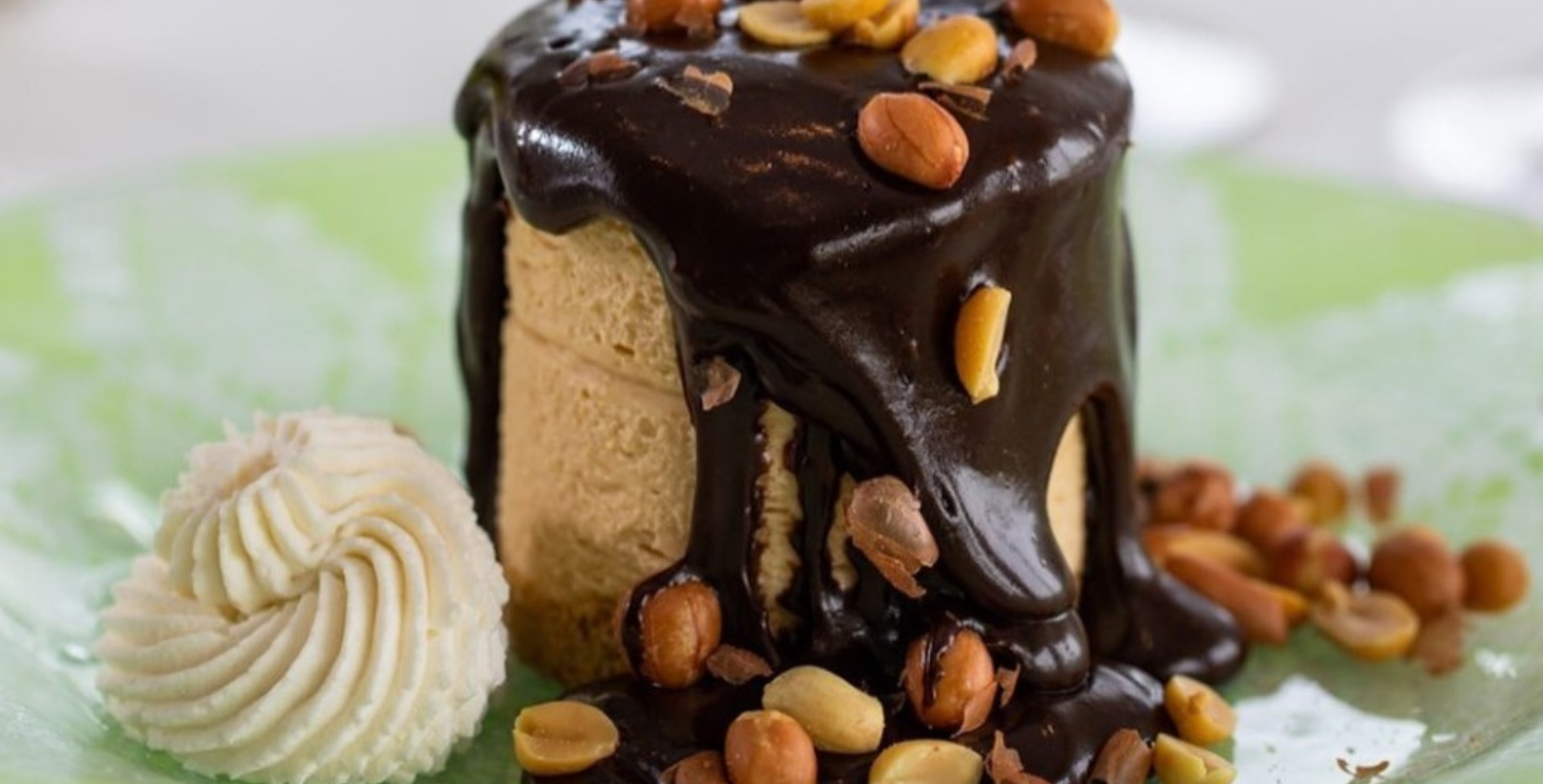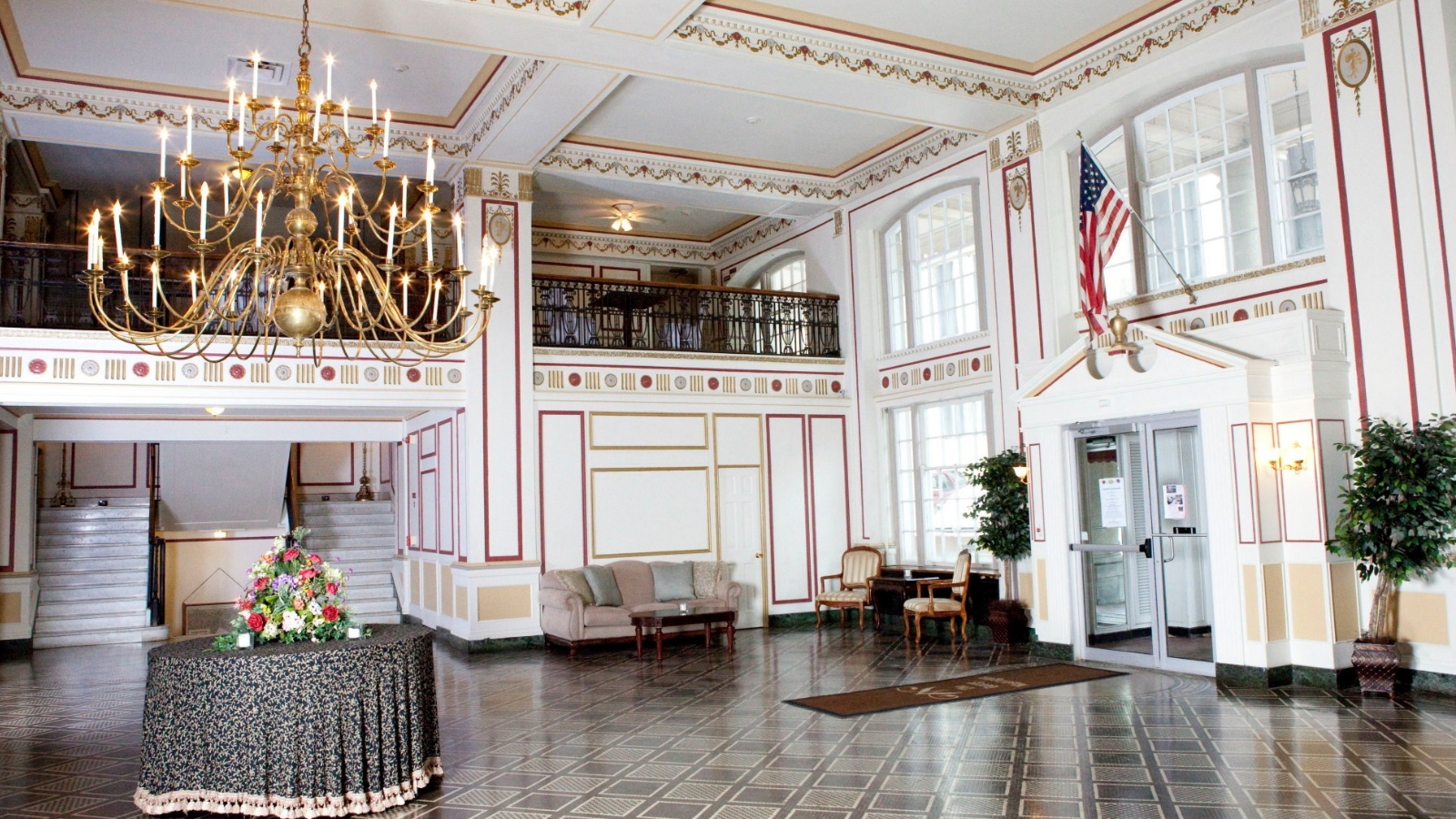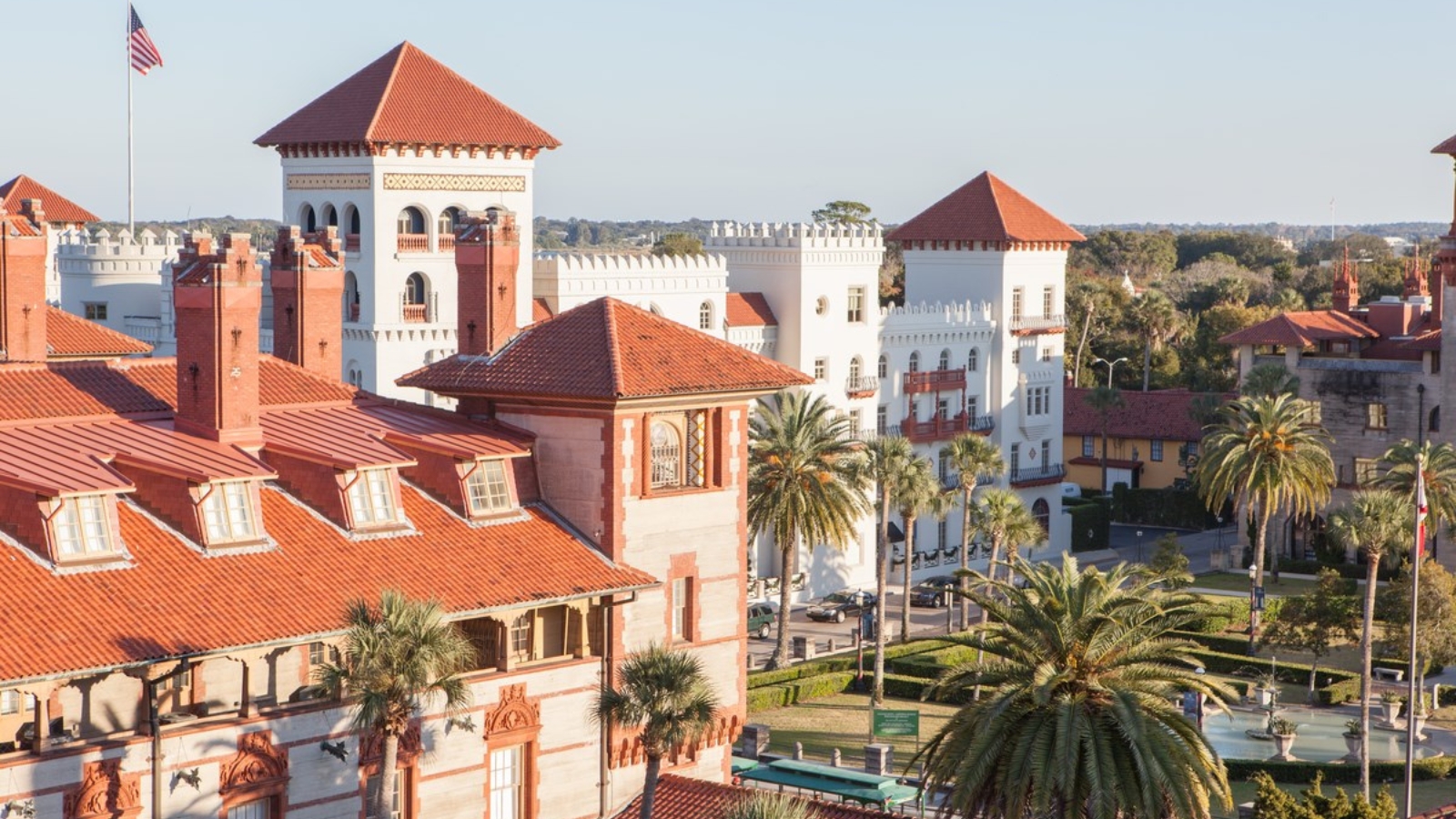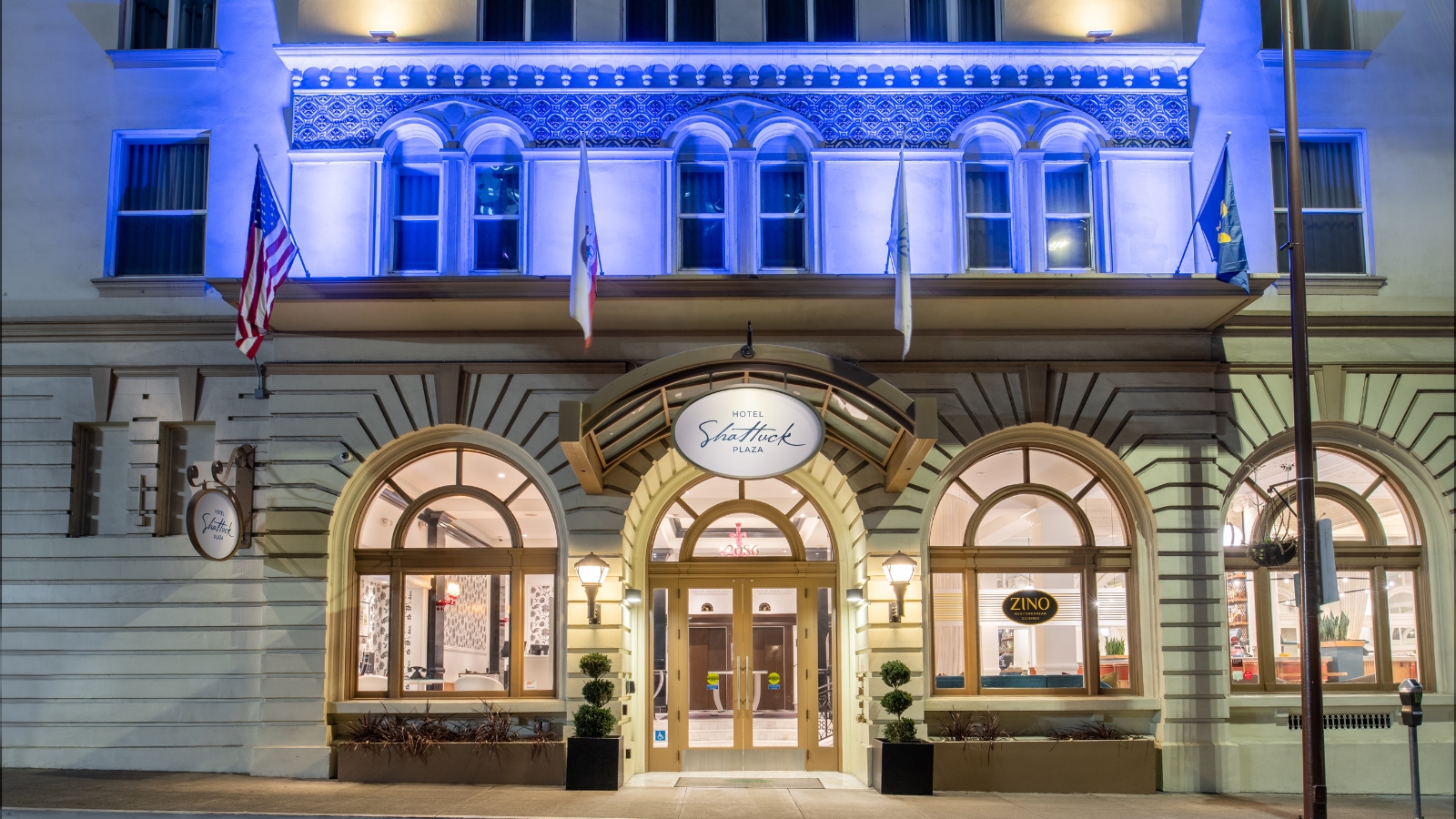Receive for Free - Discover & Explore eNewsletter monthly with advance notice of special offers, packages, and insider savings from 10% - 30% off Best Available Rates at selected hotels.
The 2023 Top 25 Historic Hotels of America Culinary Heritage and Traditions List

The 2023 Top 25 Historic Hotels of America Culinary Heritage and Traditions List
November 20, 2023 — WASHINGTON, DC — Historic Hotels of America, a program of the National Trust for Historic Preservation, celebrates many iconic and legendary hotels that have made important contributions to the culinary heritage and traditions of the United States. Culinary heritage refers to a food or beverage that was created, invented, or first served at a historic hotel and is still served today. Culinary tradition means a food or beverage or mode of service that was perfected by the hotel’s chefs or has been served to guests for at least 25 years regardless of its origins.
For example, the historic Omni Parker House, which opened in 1855, is famous for the creation of both the soft, warm Parker House Rolls and the original Boston Cream Pie, which was named the official state dessert of Massachusetts in 1996. Tomato juice was the invention of a chef at French Lick Spring Hotel, concocted when the kitchen ran out of oranges for juice one morning at breakfast. The Green Goddess Dressing was created at the Palace Hotel in 1923. Several hotels honored in the 2023 Top 25 Historic Hotels of America Culinary Heritage and Culinary Traditions List provide recipes so you can mix a cocktail or prepare a pie like the one you would enjoy as their guest.
From original recipes that were created at a historic hotel and have become widely loved and enjoyed everywhere, to specialty drinks and cocktails that are deeply a part of the hotel’s history, the 2023 Top 25 Historic Hotels of America Most Unique Culinary Heritage and Culinary Traditions List offers something sweet, savory, or refreshing for any person in 2023.
View the 2023 Top 25 Historic Hotels of America Culinary Heritage and Traditions List Press Release here.
Sign up to receive future news, highlights, and advance notice of special offers from Historic Hotels of America®.
John Rutledge House Inn (1763)
Charleston, South Carolina
 |
She-Crab Soup appears on many restaurant menus in Charleston, South Carolina, but the very first bowl was whipped up at its historic Rutledge House. In the 1920s, Charleston’s mayor Robert Goodwyn Rhett resided at what is now the historic John Rutledge House Inn, inducted into Historic Hotels of America in 1989 and winner of a Historic Hotels Awards of Excellence honor in 2021. The mayor was expecting a visit from U.S. President William Taft during his tour of Charleston. Wanting to do something special for the President, Mayor Rhett asked his butler to “dress up” their typical crab soup. His presidential variation featured orange crab eggs, giving the soup a bright color and great taste. Thus, She-Crab Soup was born and began a legacy and practically a rite of passage for all Charleston foodies. She-Crabs (roe-carrying female crabs) are known to be a real delicacy because they have much more flavor than their male counterpart, He-Crabs. The orange-hued eggs of she-crabs give the soup extra flavor and color. She-Crabs are difficult to find in many parts of the country, so white crab meat can be substituted. Hard-boiled egg yolk may be crumbled in the soup to imitate crab egg. |
Hot Springs, Virginia
 |
Fresh, local trout has been a popular menu item at The Omni Homestead Resort for more than a century. Allegheny Mountain Trout has been a guest favorite at this hotel for generations and is still served today in the hotel’s dining room. The Omni Homestead Resort was inducted into Historic Hotels of America in 1989 and is a Charter Member of the program. Its trout entrée has been updated over the years, and the Homestead currently features Sautéed Allegheny Mountain Trout Almondine. It is served with marble potatoes, haricots verts, macerated grapes, and brown butter sauce. The trout is sourced from the Virginia Trout Company, located less than an hour away from the resort, just outside of Monterey, Virginia in Highland County. The partnership between The Homestead and the Virginia Trout Company is one of the longest running between the resort and local food purveyors. The recipe was featured in Former Executive Chef Albert Schnarwyler’s 1989 book, Dining at The Homestead. |
Stockbridge, Massachusetts
 |
Apple pie à la mode is a long-standing tradition and a favorite dessert for the generations of guests and family who have dined at The Red Lion Inn, which was inducted into Historic Hotels of America in 1989. The Inn’s current owner, Nancy Fitzpatrick, can recall from family history that the recipe was passed down from her grandmother, Mary Pratt. “When we first opened, Nana May (as we called her), went out to the kitchen and showed the chef how she made her pie. She was a wonderful cook. There was always dessert at her house. It was the pie my mother made when I was growing up.” Nancy’s mother and father, Jane and John Fitzpatrick, opened the Inn in 1969 and the recipe has not changed since. The Red Lion Inn’s apple pie with vanilla ice cream is enjoyed by guests year-round in the main dining room and at the Widow Bingham’s Tavern. It is served at lunch and dinner and is part of the Inn’s special holiday menus. |
St. Michaels, Maryland
 |
Crab cakes can be found in many states, but Maryland’s version is famous for a reason. An essential part of the Chesapeake Bay’s heritage, the Blue Crab is a regional delicacy and is sought after by Maryland natives and visitors alike. The waterways surrounding the Inn have produced a bounty of crabs and fueled a thriving seafood industry long before the building was constructed in 1816. Crab cakes have been a staple menu item throughout the state since the 1930s and the Inn at Perry Cabin, which was inducted into Historic Hotels of America in 2018, has served their own version since the hotel’s doors opened. With a belief in remaining “Loyal to Local,” crabs are harvested daily by Eastern Shore watermen and delivered fresh to the Inn’s kitchen for a variety of preparations. Offered during every dining period, crab cakes made from Blue Crab can be enjoyed for breakfast (Maryland Crab Cake Benedict), lunch (Crab Cake BLT) and dinner (Maryland Jumbo Lump Crab Cakes). The crab cakes at Inn at Perry Cabin provide a true taste of the Chesapeake Bay and a bite into Maryland’s culinary history. |
Washington, D.C.
 |
The Southern-style Mint Julep is the signature drink served at the Round Robin Bar of The Willard InterContinental, Washington DC, and dates to 1830, when Kentucky Senator Henry Clay tried to order a Mint Julep at the original bar. The hotel bartender was not familiar with this cocktail, so Senator Clay asked if he could go behind the bar to show him how to make a Mint Julep. Traditionally, Mint Juleps were made with rum, rye, or brandy. Henry Clay’s version featured sour mash corn whiskey, distilled in Bourbon County, Kentucky. Before he left The Willard, Senator Clay wrote the original ingredients on a napkin for the bartenders to keep. Since 1830, the Round Robin Bar's signature cocktail has been the Mint Julep. Senator Clay’s recipe is followed to this day, as the Willard seeks to preserve this piece of history. The Willard InterContinental, Washington DC was inducted into Historic Hotels of America in 2010. Today, the hotel’s Round Robin Bar serves the Henry Clay Mint Julep as its signature drink and sells more than 20,000 juleps throughout the year. As bartender Jim Hewes—named Historic Hotels Awards of Excellence Hotel Historian of the Year in 2017—says, "the Mint Julep is a light libation of extraordinary character." |
Taneytown, Maryland
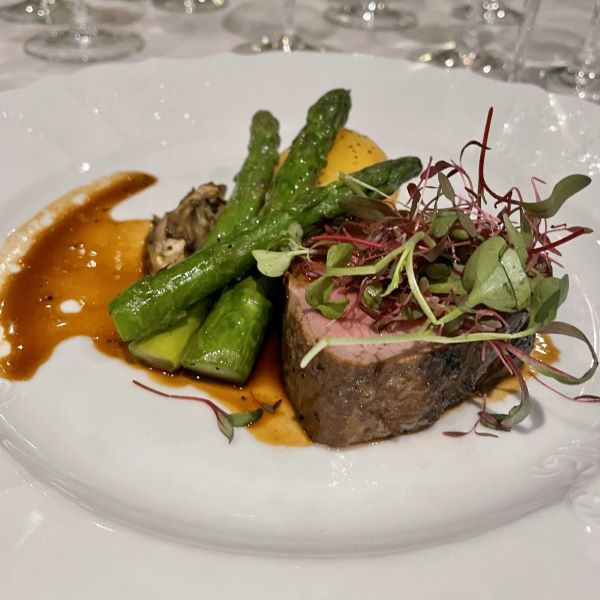 |
The Smokehouse Restaurant at the historic Antrim 1844 hotel in Taneytown, Maryland, boasts a rich culinary heritage, with the filet mignon being a cornerstone of their menu. The Smokehouse Restaurant has a menu that changes daily based on seasonal ingredients. However, the signature filet mignon remains on the menu as a constant. The restaurant's renowned prix fixe menu, featuring a selection of six courses, showcases their commitment to culinary excellence. With five chefs over the course of 32 years since the hotel opened at the historic estate, Antrim 1844 has asked prospective chefs to demonstrate their ability to craft the perfect filet mignon during the interview process. This delectable dish has stood the test of time, cherished by every chef who has graced their kitchen and guests who return each year. The secret to this iconic dish lies in the simplicity of preparation—grilling with a touch of salt and pepper. And then, the restaurant's current creative Executive Chef Inti Villalobos-Coady infuses his unique twist into the accompanying sides, sauces, and garnishes, offering a diverse culinary experience. This commitment to quality has been acknowledged by Dorona and Wine Spectator, dating back to 1998, reinforcing their dedication to fine dining and culinary expertise. |
French Lick, Indiana
 |
It was an early summer day in 1917 at the French Lick Springs Hotel when Chef Louis Perrin entered his kitchen ready to prepare the morning meal for a crowd of guests at The Springs Restaurant. Things were progressing well until the Chef realized that they had run out of oranges and could not make orange juice. Ever resourceful, Chef Perrin simply grabbed a handful of tomatoes and began creating a new beverage – tomato juice. Using ripe tomatoes, a touch of sugar and his secret sauce, the Chef created a new breakfast drink that was an enormous success. News of the drink spread quickly throughout the country and people arrived at the hotel just to try the interesting concoction. Soon there were too many orders for tomato juice and The Springs kitchen could not keep up with the demand. A tomato juice company was formed in French Lick and given the secret recipe to make the juice in massive quantities for the hotel. But once folks had a taste for it, the demand for tomato juice increased, and by 1928, canned tomato juice was available on the commercial market everywhere. |
Boston, Massachusetts
 |
It will come as no surprise that the longest continuously operating hotel in the United States boasts some of the most historic and prestigious culinary traditions. The Omni Parker House opened in Boston, Massachusetts, in 1855, and was inducted into Historic Hotels of America in 2006. Its Boston Cream Pie, the custard-filled cake with chocolate frosting, was originally called the “Parker House Chocolate Cream Pie.” The pie (technically a cake) was created and served at Parker’s Restaurant from the opening of the hotel in October 1856. The original Parker House recipe was so popular that in 1958 it became a Betty Crocker® boxed mix. In 1996, thanks in part to a Norton High School civics class that sponsored the bill, Boston Cream Pie was proclaimed the official Massachusetts State Dessert. Today, you can order various interpretations of “Boston Cream Pie” in restaurants and cafés around the world. Those who want to taste the original can either dine in at the Omni Parker House or order it online. Along with the famous dessert, the hotel kitchen also produced the original soft, buttery, Parker House Rolls. Dubbed “America’s first soft dinner roll,” the recipe was closely guarded and top-secret until 1933, when U.S. President Franklin Roosevelt requested the rolls be served at a White House dinner. According to legend, Franklin and Eleanor Roosevelt asked that the recipe be forwarded to them at the White House. The Omni Parker House obliged. |
Chicago, Illinois
 |
Bertha Honoré Palmer, wife of the Chicago merchant and real estate developer who built the Palmer House hotel, directed the Palmer House chef to create a unique confection to be served at the Columbian Exposition World’s Fair in 1893. The hotel chef invented the chocolate brownie: a dense chocolate square – somewhere between fudge and cake – topped with sugary walnuts and glazed. The Palmer House chocolate brownie recipe has existed for more than a century and is the same one used for the brownies served in the Palmer House Hilton today. It remains one of the hotel’s most popular desserts. The first reference to the “brownie” in America appeared in the Sears Roebuck Catalog published in Chicago in 1898. The hotel was inducted into Historic Hotels of America in 2007. A leader in hospitality to this day, the hotel still crafts their brownies according to its original recipe. Guests can enjoy this tasty treat at any of the hotel's many dining outlets or take them to-go. |
San Francisco, California
 |
The Green Goddess Dressing was created at the Palace Hotel in 1923 by Executive Chef Phillip Roemer. Chef Roemer created the dressing for a banquet held at the Palace, which was San Francisco’s first luxury hotel and the largest in the world when it opened in 1875. The Palace Hotel was inducted into Historic Hotels of America in 2010. The 1923 banquet was held to honor actor George Arliss, who was the lead in William Archer’s hit play, “The Green Goddess.” After the banquet, the Green Goddess Salad became a permanent menu item at the historic Palace Hotel. In the early years, when there was limited access to fresh produce, the dressing was served with shredded iceberg lettuce, canned vegetables and a choice of chicken, shrimp, or crab. Over the years the salad has evolved. Celebrating 100 years in 2023, the salad is referred to as The Garden Court signature crab salad and features farm sourced mixed baby greens, fresh locally grown California vegetables and a generous portion of Dungeness crab meat. The salad is offered with the famous Green Goddess Dressing. Guests can experience a lightened version of the Green Goddess Dressing at the hotel’s fine restaurant, The Garden Court. |
Mackinac Island, Michigan
 |
America’s Original Grand Hotel™ has been an icon of summer resorts since 1887 and has served the delicious Grand Pecan Ball to guests at its Mackinac Island, Michigan, retreat since 1947. The recipe was adapted from a dessert served in the tearoom at the L.S. Aryes department store in Indianapolis. The owners of the Grand Hotel enjoyed it so much that they asked a chef to recreate it in 1947, hoping their guests would enjoy it, too. The Grand Pecan Ball quickly became the resort’s most popular dessert, and it is still loved by guests today. The hotel prepares over 60,000 Grand Pecan Balls every year and guests can order the treat from any menu at the resort. Grand Hotel is also known for its afternoon tea service and was featured on The 2023 Historic Hotels of America Top 25 Afternoon Tea Experiences List. |
New York, New York
 |
Long before pizza, bagels, pretzels, and hot dogs, the oyster reigned supreme as the quintessential New York City dish, as oysters are indigenous to the brackish waters of the city’s harbor. The shellfish was so common that the Dutch paved Pearl Street with oyster shells from a midden, a tremendous mound of shells, that preceded the eponymous street. By the mid 1800s, the New York oyster business sold more than 12 million oysters each year. At the corner of Wall Street and Pearl, The Wall Street Hotel is housed in the former Tontine Coffeehouse, the origin of the New York Stock Exchange, and pays homage to the rich legacy of New York City harbor oysters. Visitors can order the salty dish at the lobby bar, Lounge on Pearl, and at the hotel’s signature restaurant, La Marchande. At La Marchande broiled East Coast oysters are served with Pernod Spritz, parmesan butter and a garlic baguette. The restaurant also features a dedicated oyster bar where diners can enjoy fresh East Coast, West Coast, and Long Island oysters. Because pollution and overfishing have damaged the oyster population in recent decades and threatened this historic tradition, The Wall Street Hotel has partnered with the Billion Oyster Project, a non-profit organization that seeks to add a billion oysters to the water by 2035. Through the Billion Oyster Project, The Wall Street Hotel engages guests with the conservation cause through custom-designed oyster-inspired gifts and opportunities to learn more about the issue. |
Mackinac Island, Michigan
 |
Located on the Straits of Mackinac between mainland Michigan and the Upper Peninsula, Mackinac Island is a summertime destination that is perhaps as famous for its taffy and chocolate treats as it is for its history. The Carriage House restaurant at Hotel Iroquois is pleased to offer guests a hot fudge sauce made from a storied recipe. When the historic Hotel Iroquois and Carriage House Restaurant opened in 1958, new hoteliers Mr. and Mrs. McIntire had no prior hospitality experience and were eager for feedback. One evening, Jeannette Doud—also a hotelier on the island—came to dinner and offered her critique of the dessert: the fudge fell short of high expectations. Mrs. Doud offered her own recipe for hot fudge to the McIntires and the Carriage House embraced it. But how did Mrs. Doud come across this recipe? One possible origin is the kitchens of the Waldorf Astoria in New York. Mr. Stewart Woodfill, the former owner of the island’s historic Grand Hotel, claimed to have gotten this fudge recipe from the Waldorf Astoria and used it for the Grand Pecan Ball at his own property. Hotel Iroquois staff theorize that he was sworn to secrecy, but he decided to share it with Mrs. Doud who then shared it with Mr. and Mrs. McIntire. It has been a menu fixture at Hotel Iroquois ever since. Hotel Iroquois was inducted into Historic Hotels of America in 2023. It is a contributing structure within Mackinac Island’s National Historic Landmark District. |
Wilmington, Delaware
 |
Signature almond macaroons are served at all lunches, dinners, and banquet events at HOTEL DU PONT. So popular are these delicious cookies that the bakeshop makes more than 400,000 per year in batches of 3,000. Gluten-free and containing only four ingredients, the macaroon recipe is simple yet utterly unique to HOTEL DU PONT. This historic hotel in Wilmington, Delaware, was a charter inductee of Historic Hotels of America in 1989. The macaroon originates in Europe, where it was popularized by French and Italian pastry chefs. The hotel's famous macaroons have been served as a welcome gift and turndown amenity, as well as an accompaniment to banquet events, for over 80 years. HOTEL DU PONT macaroons are available for purchase by the dozen (plain or chocolate dipped) at the hotel’s bakeshop, Spark’d Creative Pastry. |
Chatham, Massachutsetts
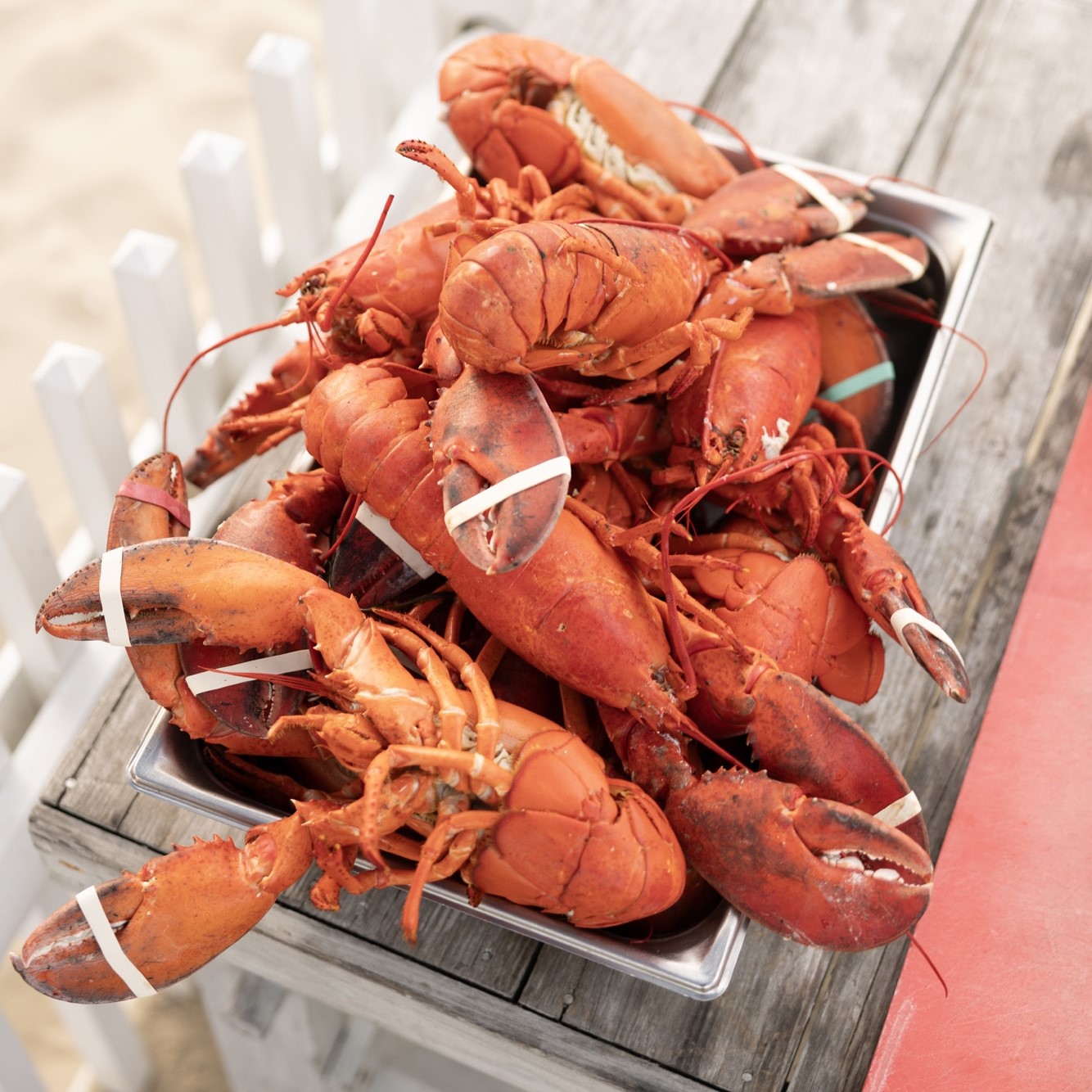 |
Welcoming guests since 1914, when it was a semi-private hunting lodge for wealthy Bostonians escaping the hustle and bustle of the city, Chatham Bars Inn has earned the reputation of being "Cape Cod's Most Beautiful Address." When Charles Hardy founded the Inn, he established an on-site farm providing produce for the resort’s restaurant, which served farm-to-table cuisine before the term “farm-to-table” had been coined. This farming tradition continues as the Inn currently owns and operates its own 8-acre farm not far from the Inn. The Chatham Bars Inn Farm produces well over 100,000 lbs and 125 varieties of vegetables each year, featuring innovative farming techniques such as hydroponics and Slovenian beekeeping. Guests at the Inn’s five restaurants enjoy the Inn’s produce daily and also have the opportunity to enjoy outdoor farm dinners throughout the summer season and dinners in the farm’s glass greenhouse during the fall. Other culinary traditions at the historic seaside hotel include clambakes and lobster bakes. The Native American tradition of cooking lobsters in sand pits predates European colonization. Guests are invited to watch the process as the Inn’s chefs heat rocks for over four hours, then layer seaweed, lobsters and more under canvas tarps held down with sand. After just an hour, guests return to see the unveiling which reveals a beautifully cooked meal with red lobsters, corn and potatoes that have taken on a delicious smoky, briny flavor created by the charred seaweed. Visit Historic Hotels of America to watch a video of a lobster bake at the Inn. |
Colorado Springs, Colorado
 |
A Colorado Springs resort steeped in history spanning almost a hundred years, The Broadmoor is rich in tradition and culture, and a Charter Member of Historic Hotels of America since 1989. Its founder, Spencer Penrose, brought the best artisans, architects, and landscape designers in to build it. When the time came to hire a chef, he contracted Italian Executive Chef Louis Stratta and charged him with bringing his inventive and international ideas to America’s west. In the resort’s 100-year history, The Broadmoor has had only four Executive Chefs. When the hotel opened on June 29, 1918, Chef Stratta prepared Shrimp Salad Louis for the formal opening festivities. This was not his first meal for the hotel, however: he had begun his service in 1916 by preparing meals for the construction workers building the hotel. Except for an eight-year period from 1932 to 1940, Chef Stratta held the position of executive Chef until his death in 1976. The traditional west-coast seafood dish can be experienced through in-room dining or at La Taverne and The Grill. |
Bethlehem, Pennsylvania
 |
Historic Hotel Bethlehem in Bethlehem, Pennsylvania, revived a local heritage recipe for its guests to enjoy: the Moravian Sugar Cake. This sweet treat is a traditional bread-type dessert started by Colonial Moravian settlers in Winston-Salem, North Carolina, and in Bethlehem, Pennsylvania, circa 1741. The Historic Hotel Bethlehem opened in 1922 and was inducted into Historic Hotels of America in 2002—the hotel was even a winner of the Historic Hotels Awards of Excellence in 2019. It was also voted USA Today's People’s Choice Best Historic Hotel in 2021, 2022, and 2023. The hotel has been serving Moravian Sugar Cake to guests for 20 years. In the past, the cake would often be served during a “Love Feast,” or a time during worship where people could have a snack to hold them over to make it through the service. Today, Moravians still have Love Feasts, albeit in different ways. The Hotel started making it for guests to celebrate the community’s deep roots in colonial Moravian-settled Bethlehem. The Moravian Sugar Cake is available daily for guests in the lobby to enjoy. |
Louisville, Kentucky
 |
The Brown Hotel, opening with a grand flourish in 1923, drew over 1,200 guests each evening for its dinner dance by the height of the Roaring ‘20s. One evening, in 1926, The Brown Hotel’s chef Fred Schmidt grew weary of serving traditional ham and eggs and from that he was inspired to create the decadent Hot Brown open-faced sandwich. Delighting his guests with an open-faced turkey sandwich with slices of bacon and tomatoes all baptized in a bubbling Mornay, The Hot Brown was born! Since this culinary masterpiece was first presented to guests of The Brown Hotel in 1926 the recipe remains unchanged. Since that fateful night, The Brown Hotel has served more than 1.5 million Hot Browns. Visitors from around the world seek out the now world-famous Hot Brown as an opportunity to try the authentic original. Known as a leader in hospitality, The Brown Hotel was inducted into Historic Hotels of America in 1989. The Brown Hotel also serves an original cocktail, the Ali Smash, named after legendary boxer and frequent guest Cassius Clay. Legend has it that Louisville boxing coach Joseph Martin told young Clay, “You’re spicy as rye, but you might consider learning to fight before getting smashed.” |
Charleston, South Carolina
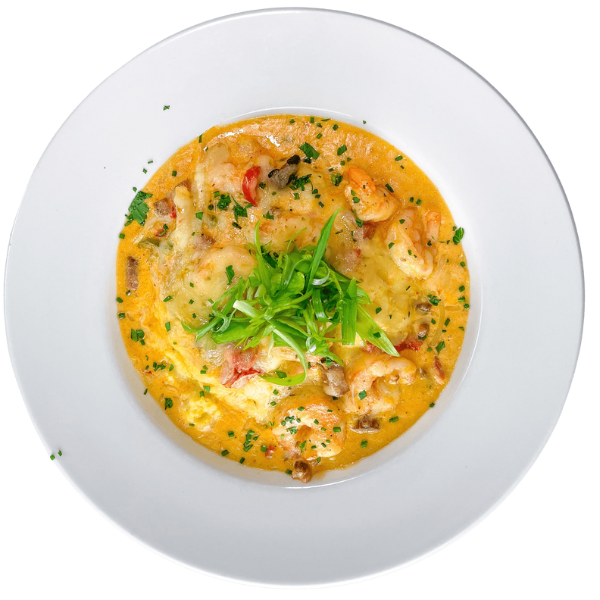 |
Shrimp and grits are a southern staple and a tradition in the Lowcountry. This dish has been on the menu at the Francis Marion Hotel for over 20 years. Built in 1924 as the “Grande Dame of the Carolinas” and named for Revolutionary War hero Francis Marion, the Francis Marion Hotel remains one of Charleston’s premier hotels. It was inducted into Historic Hotels of America in 1999 and was honored as a winner of the Historic Hotels of Excellence in 2019. Its shrimp and grits was originally a breakfast item and made for fishermen. Once called "breakfast shrimp,” this dish was filling enough for their long hours of labor. Typically enjoyed through shrimp season, which runs from May through December, these fishing families made their breakfast shrimp with simplicity. Just using shrimp cooked in bacon fat and plain grits, the dish was more of a necessity rather than the exquisite recipe one might find today. This award-winning dish can be found at the Swamp Fox Restaurant thanks to Executive Chef Simon Andrew, who tweaked this regional and historic dish into the beloved one served today. Using local shrimp as well as regionally local grits from Adluh Mills, located in Columbia, South Carolina, the hotel chef is sure to source locally produced products for this historic dish. |
Sonoma, California
 |
“Spa Cuisine” became a national movement in the 1980s in large part because Edward Safdie, then the owner (1980-1985) of The Fairmont Sonoma Mission Inn & Spa, published a cookbook with spa cuisine recipes in 1985. Spa Food: Menus & Recipes from the Sonoma Mission Inn cookbook made spa cooking – tasteful fare high in macronutrients and low in sugar, fats, and processed ingredients – a national phenomenon and has been coined a “book for cooks.” The resort’s health-conscious offerings date back to its original hot springs baths in the late 19th century. The Spanish Colonial-style Inn dates to 1927 and it was inducted into Historic Hotels of America in 2014. In the 21st century, the resort continues Safdie’s legacy. The resorts’ current culinary team demonstrates an unwavering commitment to serve guests impeccable meals created with seasonal ingredients sourced from regional wineries, breweries, ranches, fisheries, and farmers. |
Hawley, Pennsylvania
 |
Since its opening in 1980, The Settlers Inn has been committed to presenting local food that would help preserve small family farming in Pennsylvania’s Delaware Highlands. The Inn was inducted into Historic Hotels of America in 2010. When the Inn opened, owner/chef Grant Genzlinger reached out to local growers and producers to create partnerships that would highlight the bounty of the region in a simple and direct manner. Blooming Grove Brook Trout is sourced directly from a local hatchery that utilizes mountain river troughs. The hatchery dates to the 1880s and is one of the most historic in the United States. Blooming Grove Smoked Trout was featured on The Settlers Inn menu since its opening in 1980. Blooming Grove Brook Trout is served at The Settlers Inn year-round and may be found on the breakfast, brunch, and dinner menus. Today, there are over 25 direct-to-restaurant farm providers that serve Settlers Inn. In addition, the Inn’s extensive gardens produce many edible flowers used in recipes and as decorative garnishes. Recently, The Settlers Inn introduced a Chef’s Demonstration Garden. Located just steps from the kitchen, the garden will yield a small number of fresh vegetables and herbs, so guests can make the direct connection between fresh ingredients and quality meals. |
Winston-Salem, North Carolina
 |
Complimentary ice cream has been served to guests at The Graylyn Estate since it opened as a historic luxury boutique hotel and conference center in 1984. The retreat dates to 1925, when Bowman Gray purchased 87 rolling acres in Winston-Salem, North Carolina, to build his family’s dream home. Today, The Graylyn Estate is owned and operated by Wake Forest University and is Winston-Salem’s only luxury boutique hotel and conference center. The hotel celebrates its past by carrying on the traditions of the Gray family and one of those traditions is dessert. Bowman Gray’s favorite treat was ice cream and in his honor the hotel serves ice cream 24/7 from the Butler Pantry, now known as the Ice Cream Room. Mrs. Nathalie Gray was not immune from a sweet tooth, either. She was well-known for her butterscotch sugar cookies, and the recipe was inspired by the names of the beloved Gray family dogs, two Scottish Terriers named “Butter” and “Scotch.” The Graylyn Estate honors that tradition by serving butterscotch sugar cookies in the foyer each afternoon at 3:00 PM. The Graylyn Estate culinary team bakes the cookies daily, providing a fresh treat for guests during check-in. |
Hershey, Pennsylvania
 |
As the original purveyor of Hershey's chocolate brand, this historic hotel in Hershey, Pennsylvania, invites its guests to partake in indulgent cuisine experiences. The Hotel Hershey opened in 1933 and was inducted into Historic Hotels of America in 1991. Over the years, guests have brought elevated expectations for dessert when dining at The Hotel Hershey and the signature chocolate cream pie has been a guest favorite for decades. Made with a chocolate cookie crust, dark chocolate custard, whipped cream and chocolate shavings, this top-selling dessert first appeared on the menu as early as 1976 and is still a must-order among new and return guests. It can currently be found on the dessert menu at Harvest, the Hotel’s farm-to-table restaurant, as well as on the room service menu for all guests to enjoy. |
Jackson, Wyoming
 |
The Wort Hotel’s Famous Corn Chowder was first introduced at the Silver Dollar Bar in 1985. The recipe was added to the Wort Hotel’s menu when the hotel chef, Arthur Leech, wanted to create a hearty staple item for the menu that would keep guests warm during the long, cold, winter months. The original hotel opened in 1941 and The Wort Hotel was inducted into Historic Hotels of America in 2002. Guests can enjoy the chowder at the Silver Dollar Bar & Grill in Jackson Hole, Wyoming, or at home with the recipe included below. Ingredients:
|
San Diego, California
 |
In January 1986, Rancho Bernardo Inn in San Diego, California, hosted the National Conference of Gastronomy. Famous chefs and actors attended the conference, including Julia Child, Alice Waters, Diana Kennedy, Danny Kaye, and Jacque Pepin. Vincent Price, the famous horror actor and—surprising many—a published cook, demonstrated his Old-Fashioned Bread Pudding recipe for the attendees. Afterward, Price gave the Executive Chef at Rancho Bernardo Inn the bread pudding recipe to use at the Inn because it was so well received. The Inn served bread pudding at brunch in its former restaurant El Bizcocho for over 26 years and the Inn continues to serve it at the Veranda Dining Room. The recipe is unchanged since Price introduced it to the Inn and remains a guest favorite. Among the best Wine Country resorts, Rancho Bernardo Inn was inducted into Historic Hotels of America in 2021. |
“What better way to experience a part of history than to taste the recipes created, invented, or perfected over the past two hundred years at Historic Hotels of America,” said Lawrence Horwitz, Executive Vice President, Historic Hotels of America and Historic Hotels Worldwide. “These tastes of history, many created for a special event for presidents, world leaders, celebrities, special guests, and local events and celebrations are now part of our nation’s culinary heritage and culinary traditions. At Historic Hotels of America, learning about history can be fun, delicious, savory, sweet, and tasty.”
Read more:
The 2023 Top 25 Historic Hotels of America® Most Magnificent Art Collections
2023 Top 25 Historic Hotels of America® Most Historic Golf Courses
The 2023 Top 25 Historic Hotels of America Most Magnificent Ceilings and Domes
The 2023 Top 25 Historic Hotels of America Most Magnificent Gardens
The 2023 Top 25 Historic Hotels of America Where Women Made History
The 2023 Top 25 Historic Hotels of America in Film and Television History
The 2023 Historic Hotels of America Top 25 Afternoon Teas





















